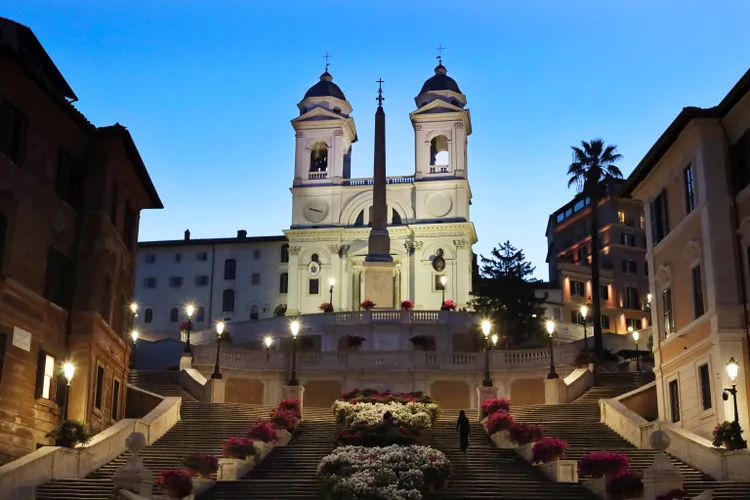1. Overview of Events in Rome
Tourists can find captivating events in Rome throughout the year, with a diverse range of cultural and secular festivities that cater to every type of traveler. While Easter is a bustling time for visitors, numerous other events offer unique experiences all year long.
2. January: New Year’s Day and St. Anthony’s Day
New Year’s Day is a notable holiday in Italy, resulting in the closure of most shops, museums, and restaurants as Romans recover from the previous night’s festivities.
January 6 marks Epiphany and Befana, when Italian children celebrate the arrival of La Befana, a benevolent witch. In Vatican City, a grand procession sees hundreds of attendees in medieval costumes, bearing gifts for the Pope while he holds a morning mass at Saint Peter’s Basilica.
January 17 is Saint Anthony’s Day (Festa di San Antonio Abate), honoring the patron saint of various trades. This celebration takes place at the church of Sant’Antonio Abate, with the traditional “Blessing of the Beasts” occurring in Piazza Sant’Eusebio.
3. February: Beginning of Carnevale
February heralds the onset of Carnevale, which can commence as early as February 3, depending on Easter’s date. This period is notably vibrant in Rome, blending pre-Lenten festivities with religious processions leading up to Ash Wednesday. Events typically unfold in Piazza del Popolo, drawing crowds eager to partake in the revelries.
4. March: Women’s Day and Maratona di Roma
On March 8, the Festa Della Donna or Women’s Day is observed, with many restaurants offering special menus for women.
The anniversary of Julius Caesar’s assassination is commemorated on March 14, known as the Ides of March, near his statue in the Roman Forum.
In March, Easter celebrations also flourish in Rome and Vatican City, filled with significant religious events that culminate in an Easter Mass in St. Peter’s Square. Additionally, the Maratona di Roma occurs later in the month, allowing runners to traverse through Rome’s ancient and renowned landmarks.
5. April: Spring Festivals and the Founding of Rome
The day after Easter, known as La Pasquetta, is a public holiday celebrated with outdoor picnics and fireworks along the Tiber River.
During the Festa della Primavera, the Spanish Steps burst into color with pink azaleas. Mid-April invites the Settimana della Cultura, where national museums offer free admission, and rare access to typically closed sites.
April 21 celebrates the Founding of Rome, with events including gladiator displays at the Colosseum. The month concludes with Liberation Day on April 25, honored through commemorative ceremonies throughout the city.
6. May: Labor Day and the Italian Open
Labor Day, or Primo Maggio, is celebrated on May 1, featuring a significant concert at Piazza San Giovanni, while many businesses close for the day.
A ceremonial swearing-in for a new group of Swiss Guards takes place at the Vatican on May 6, signifying their historic importance. Additionally, May hosts the renowned Internazionali BNL d’Italia, also known as the Italian Open, a prestigious tennis tournament held at Stadio Olimpico.
7. June: Republic Day and Religious Celebrations
June 2 brings Republic Day (Festa della Repubblica), marking Italy’s transition to a Republic in 1946, celebrated with a vibrant parade along Via dei Fori Imperiali.
This month also sees various religious holidays such as Corpus Domini, the Feast of St. John on June 23, and Saints Peter and Paul Day on June 29.
8. July: Expo Tevere and Local Festivals
In July, the Expo Tevere crafts fair showcases artisan food and authentic Roman products along the Tiber River. Concurrently, the Festa dei Noantri occurs over the last two weeks, highlighting local traditions in the Trastevere neighborhood.
Throughout both July and August, atmospheric outdoor concerts animate venues like Castel Sant’Angelo.
9. August: Festa Della Madonna Della Neve
The Festa della Madonna Della Neve commemorates the miraculous snowfall of the 4th century that led to the establishment of Santa Maria Maggiore church with recreations and special events.
Additionally, the popular summer holiday, Ferragosto, coincides with the Assumption on August 15, filled with music and dance festivities.
10. September: Grape Festival and Football Season
As the heat wanes in September, the Sagra dell’Uva (Festival of the Grape) takes place early in the month, celebrating Italy’s agricultural glory at the Basilica of Constantine. Sports enthusiasts also delight in the beginning of the football season, with local teams, AS Roma and SS Lazio, competing in home games.
11. October: Arts and Spiritual Celebrations
October hosts various arts and theater events alongside the Feast of St. Francis of Assisi on October 3. This day sees a wreath-laying ceremony near the Basilica of San Giovanni.
The Rome Jazz Festival has made a name for itself in late October, attracting top musicians at the Auditorium Parco Della Musica.
12. November: All Saints Day and Festival Events
On November 1, Italians observe All Saints Day, paying homage to deceased loved ones at cemeteries.
Throughout November, the Roma Europa Festival showcases an eclectic variety of contemporary art, while the International Rome Film Festival brings a spotlight to cinema.
13. December: Christmas and Hanukkah Celebrations
During Hanukkah, Rome’s Jewish community actively participates in a menorah lighting ceremony at Piazza Barberini.
In the lead-up to Christmas, which begins in early December, festive markets offer a variety of handcrafted gifts and traditional treats. On December 8, during the Immaculate Conception feast, the Pope participates in a significant ceremony in Piazza di Spagna.
Christmas Eve is a time for unveiling nativity displays, culminating in midnight mass at St. Peter’s Basilica. New Year’s Eve, celebrated alongside the Feast of Saint Sylvester, features lively festivities in Piazza del Popolo, marking the end of the year with music, dancing, and fireworks.




